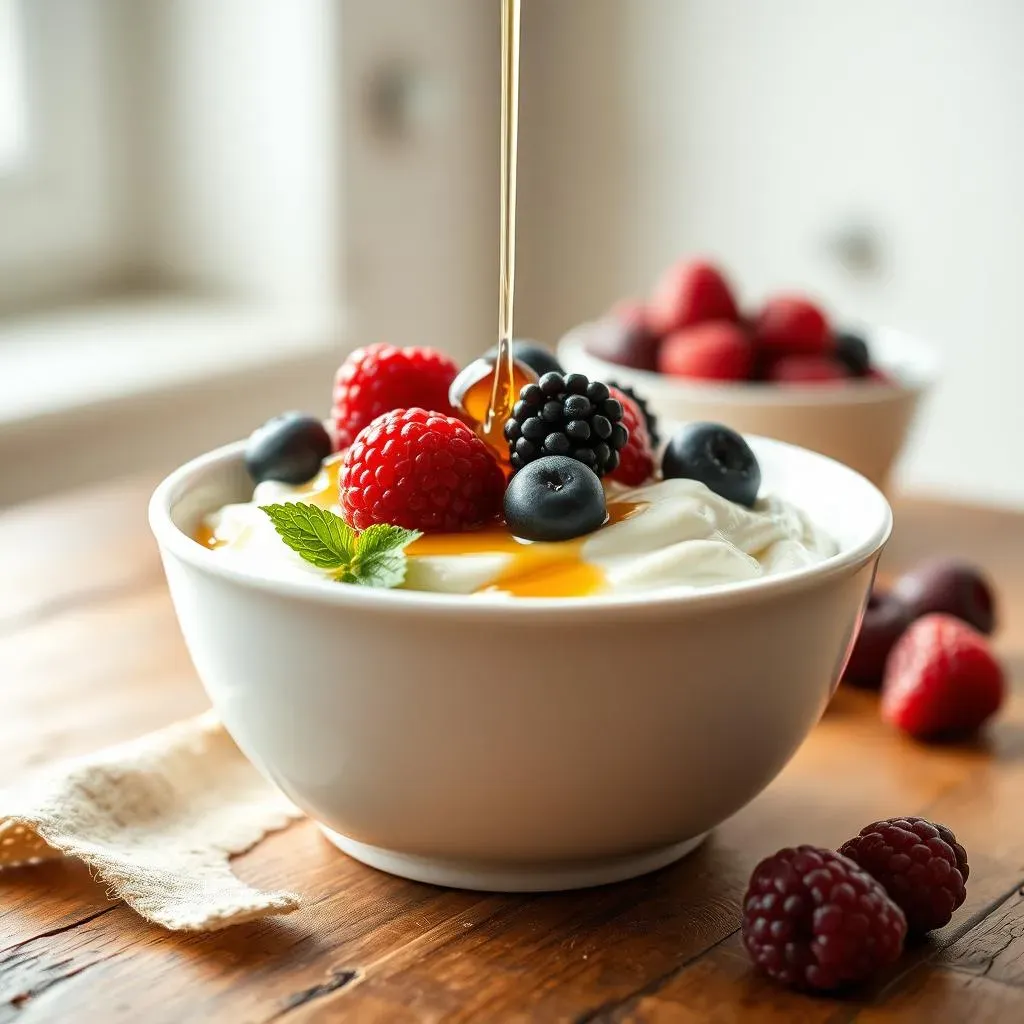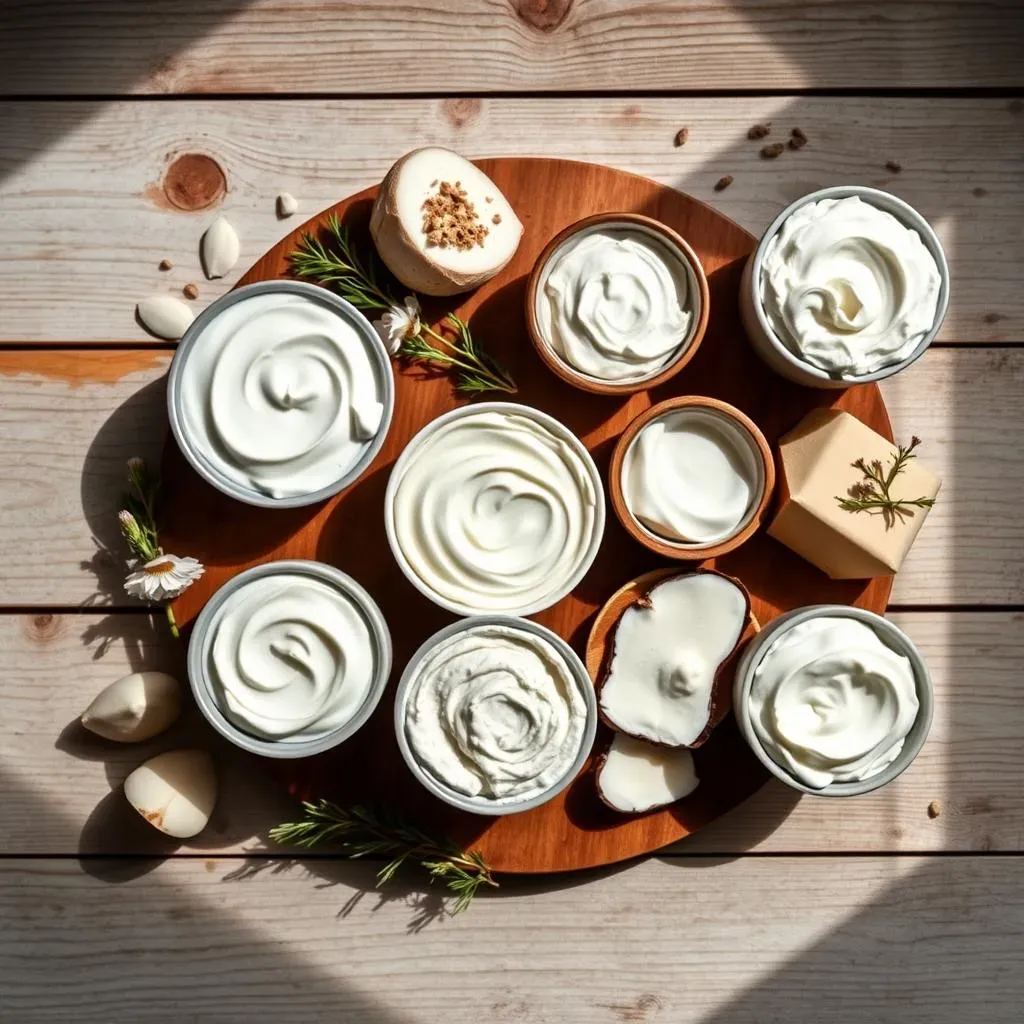Table of Contents
Ever found yourself mid-recipe, staring into an empty sour cream container? It's a kitchen crisis we've all faced. Maybe you're out, maybe you're avoiding dairy, or maybe you just want a healthier twist. Whatever the reason, knowing a good substitute for sour cream is a game-changer. This article is your guide to navigating those tricky moments. We'll explore the tangy world of alternatives, from the ever-reliable Greek yogurt to some surprising non-dairy contenders. We'll also touch on how to whip up a quick homemade version when you're really in a pinch. So, whether you're baking a cake, topping a taco, or stirring up a sauce, get ready to discover the perfect sour cream stand-in for all your culinary adventures. Let's dive in and solve the mystery of what's a good substitute for sour cream, shall we?
Greek Yogurt: The GoTo Sour Cream Substitute

Greek Yogurt: The GoTo Sour Cream Substitute
The Tangy Champion
Let's be real, Greek yogurt is the superhero of the sour cream substitute world. It's thick, it's creamy, and it's got that signature tang that makes it a perfect swap. Seriously, if you're looking for something that mimics sour cream's texture and flavor, this is your best bet. I've used it in everything from dips and sauces to baked goods, and it always delivers. Plus, you get a bonus of extra protein, which is never a bad thing. It’s like sour cream's healthier, more versatile cousin.
The best part? You can usually use it in a 1:1 ratio. That means if a recipe calls for one cup of sour cream, just throw in one cup of Greek yogurt. Done and done. Now, if you want a really close match, go for the full-fat version. The lower-fat ones can be a bit thinner, but a little cornstarch can fix that right up. It's pretty amazing how well this works. I remember once I made a cheesecake with Greek yogurt instead of sour cream and no one even noticed the difference, they just said that it was the best cheesecake ever, so I think that is a pretty good sign.
Type of Greek Yogurt | Fat Content | Best Use |
|---|---|---|
Full-Fat | Highest | Dips, sauces, baking |
Low-Fat | Medium | Toppings, lighter recipes |
Non-Fat | Lowest | Smoothies, light sauces |
Tips and Tricks
Sometimes, Greek yogurt can be a bit too thick straight from the container. If you need a smoother consistency, try whisking in a tablespoon or two of milk or water. This will loosen it up without sacrificing the flavor. Also, if you're using it in a hot dish, add it at the end of the cooking process to prevent it from curdling. No one wants lumpy sauce, right? Another trick is to use a little lemon juice to enhance the tang, if you feel it needs it. It's all about tweaking things to get them just right.
I've found that the real secret to using Greek yogurt as a sour cream substitute is to taste as you go. Every recipe is a little different, so don't be afraid to adjust the amount or add a pinch of salt or lemon juice to get the flavor you're after. And if you're trying to cut down on fat, you can always start with a lower-fat version and add a bit more to get the consistency you need. It's all about experimenting and seeing what works best for you. Greek yogurt is a pretty forgiving ingredient, so don’t stress too much about it, just have fun with it.
Other Dairy Delights: Cream Cheese and More for Sour Cream

Other Dairy Delights: Cream Cheese and More for Sour Cream
Cream Cheese: Rich and Decadent
Okay, so maybe you're not feeling the Greek yogurt vibe, or maybe you've just got a brick of cream cheese staring at you from the fridge. Good news: cream cheese can totally step in for sour cream, especially when you're after a richer, more indulgent flavor. It's got that creamy texture down pat, though it is a bit denser, so you might need to thin it out a bit. I've used it in dips, and it's awesome in baked goods like cheesecakes and coffee cakes. It adds a lovely tang, but it's not as sharp as sour cream, so that's something to consider.
The trick here is to soften it first. You don't want to be trying to stir in cold, hard cream cheese, it won't mix well. Let it sit at room temperature for a bit or, if you're in a hurry, give it a quick zap in the microwave. I usually start with a 1:1 ratio, but then add a splash of milk or lemon juice to get the consistency I want. For example, if you're making a creamy pasta sauce, cream cheese can make it extra luxurious, just be careful not to go overboard, it’s very rich. I remember one time I used it to make a frosting for cupcakes, and it was so good, it was like eating a cloud.
Dairy Substitute | Texture | Flavor | Best Use |
|---|---|---|---|
Cream Cheese | Thick, dense | Rich, tangy | Dips, frostings, baking |
Cottage Cheese | Lumpy, creamy when blended | Mild, slightly tangy | Dips, sauces, smoothies |
Crème Fraîche | Thick, velvety | Rich, nutty | Sauces, toppings, baking |
Cottage Cheese: The Unexpected Hero
Now, I know what you're thinking: cottage cheese? Seriously? Yes, seriously! If you blend it up, it loses its lumpy texture and becomes incredibly creamy. It's got a mild, slightly tangy flavor that works wonders in dips and sauces. I’ve even seen people use it in smoothies for an extra boost of protein. It’s surprisingly versatile. It’s not a straight-up substitute like Greek yogurt, but it’s a great option if you're looking to add some creamy texture to a dish and you have it on hand. It’s like a secret weapon in the kitchen.
The key is to use a good blender or food processor to get it nice and smooth, nobody wants a chunky dip. I usually add a bit of lemon juice or a splash of milk to get the right consistency. It’s not as rich as cream cheese, but it’s a good lighter option. I remember one time I made a creamy pasta sauce with blended cottage cheese, and it was light, tangy, and delicious. My friends couldn't believe it was made with cottage cheese. It's all about thinking outside the box, right?
Crème Fraîche: The Fancy Alternative
If you want to get a little fancy, you can use crème fraîche. It’s a bit more expensive but it has that rich, nutty flavor and velvety texture that can really elevate a dish. It's similar to sour cream, but it has a higher fat content, so it's extra creamy. I like to use it for topping soups or adding to sauces where I want that extra bit of richness. It’s not something I use every day, but it’s great to have in your back pocket for special occasions or when you want to treat yourself. It's like the sophisticated cousin of sour cream. I once used it to make a mushroom sauce, and the result was just divine.
Crème fraîche can be used in a 1:1 ratio as a substitute for sour cream, but keep in mind that it's quite rich, so you might want to use a little less. It also has a slightly less tangy flavor than sour cream, so you might want to add a touch of lemon juice or vinegar if you're looking for that extra kick. It’s great for both sweet and savory dishes, which makes it really versatile. I remember that one time I used it to make a lemon cake, and it was so moist and delicious. The possibilities are endless when you have crème fraîche on hand.
NonDairy Options: Finding a Vegan Sour Cream Substitute

NonDairy Options: Finding a Vegan Sour Cream Substitute
The Rise of Plant-Based Creaminess
So, you're ditching dairy but still craving that creamy, tangy goodness? No problem! The world of vegan sour cream substitutes has exploded, and there are some seriously amazing options out there. We're not just talking about sad, watery imitations anymore. We're talking rich, flavorful, plant-based alternatives that can fool even the most die-hard dairy fans. I've been experimenting with these for a while now, and I'm constantly surprised by how good they've become. From cashew-based wonders to soy-based delights, there’s a vegan sour cream out there for everyone, and it's actually quite exciting to see how far things have come.
The key with vegan substitutes is to look at the base ingredients. Cashews tend to create a really rich and creamy texture, while soy-based options can be a bit lighter. Coconut cream, when used correctly, can also bring a lovely richness and a subtle sweetness. Each has its own strengths, so it's worth trying a few different ones to find your favorite. I remember the first time I tried a cashew-based sour cream, I couldn’t believe it was vegan. It was so smooth and tangy, and it worked perfectly in my tacos. It's moments like that that make me excited about plant-based alternatives. It's not about missing out; it's about discovering new and delicious options.
Vegan Substitute | Base Ingredient | Texture | Flavor | Best Use |
|---|---|---|---|---|
Cashew Cream | Cashews | Rich, creamy | Tangy, nutty | Dips, sauces, baking |
Soy-Based Sour Cream | Soybeans | Light, smooth | Mild, tangy | Toppings, sauces |
Coconut Cream | Coconut | Rich, thick | Sweet, slightly tangy | Desserts, curries |
Navigating the Vegan Aisle
When you're shopping for vegan sour cream, you'll notice that there are a bunch of different brands and options, and it can be a bit overwhelming. Some are specifically designed to mimic the flavor and texture of traditional sour cream, while others have a more unique flavor profile. I always recommend reading the ingredient list and trying to avoid brands with a ton of additives or artificial flavors. The simpler the ingredients, the better, in my opinion. Also, pay attention to the fat content. Just like with dairy sour cream, the higher-fat versions tend to be richer and creamier, and they work better in baking and richer sauces.
I've found that some brands have a more pronounced tang than others, so you might need to adjust the recipe accordingly. If you find that your vegan sour cream is too mild, you can always add a squeeze of lemon juice or a teaspoon of apple cider vinegar to give it that extra kick. Also, don't be afraid to experiment with different brands. I've tried some that I absolutely love and others that I didn't care for at all. It's all about finding what works best for you and your taste buds. Remember, cooking is all about experimenting and having fun, so don’t be afraid to try new things. You might just discover your new favorite ingredient.
DIY Sour Cream: When You Need a Quick Fix

DIY Sour Cream: When You Need a Quick Fix
The Emergency Kit: Milk and Lemon
Okay, so you're staring at your recipe, and you've realized you're completely out of sour cream and all the substitutes we talked about? Don't panic! You can make a pretty decent stand-in with just two ingredients that most people usually have: milk and lemon juice (or vinegar). It's not going to be exactly the same as the real thing, but it's a lifesaver when you're in a pinch. I've used this method countless times when I've been caught off guard, and it always gets the job done. It’s like a secret recipe that everyone should know.
The process is super simple: just mix a cup of milk with a tablespoon of lemon juice (or white vinegar). Then, you let it sit for about 5 to 10 minutes. The acid from the lemon juice will curdle the milk, making it thicker and tangier. It’s kind of like magic. It won't be as thick as store-bought sour cream, but it will have that characteristic tang, and it will work in most recipes. It’s not going to be a perfect swap, but it’s definitely better than nothing. I remember once I made a last-minute dip for a party using this method, and no one even realized I hadn’t used real sour cream. They loved it!
Ingredient | Amount | Purpose |
|---|---|---|
Milk | 1 cup | Base for the sour cream |
Lemon Juice or Vinegar | 1 tablespoon | To curdle the milk and add tang |
Tweaking Your Homemade Version
Now, if you want to get a little fancy with your DIY sour cream, you can try a few things. If you have some heavy cream on hand, you can use half milk and half heavy cream, this will make it much richer and creamier. Or, if you want to add more tang, you can add a little extra lemon juice. It’s all about experimenting and tweaking to see what works best. I've even added a pinch of salt or a touch of garlic powder to add more flavor, depending on what I’m making. It’s like being a mad scientist in the kitchen, but in a good way.
Another trick is to let it sit in the fridge for a bit after it curdles. This will allow it to thicken up a little more. But honestly, even if you use it right away, it will still work. Remember, this method is all about speed and convenience, so don't stress too much about getting it perfect. It’s more about having a quick fix when you need it the most. It’s not going to be a substitute that you can use in every recipe, but it will work in most situations. I usually use it for dips, sauces, and toppings where the texture isn’t as critical. It’s one of those things that is good to have in your back pocket.
When to Use (and Not Use) DIY Sour Cream
Okay, so let's be real: this homemade version isn’t going to be the star of the show in a fancy cheesecake or a rich frosting. It's best for situations where you need a quick and tangy addition, but the texture isn't super critical. Think dips, sauces, toppings for tacos, or adding a dollop to your chili. It works great in those cases, and it's a lifesaver when you’re out of other options. It’s not a perfect substitute for everything, but it's a great tool to have in your kitchen arsenal. I remember one time I used it to make a quick ranch dressing, and it was surprisingly good.
However, if you’re making something where the texture of the sour cream is essential, like a creamy frosting or a baked good that needs that specific richness, then you might want to stick with one of the other substitutes we talked about, or make a quick run to the store. This DIY version is more of a temporary solution when you’re in a pinch. It’s like having a spare tire on your car: it’s not ideal for long-term use, but it’ll get you where you need to go. Just remember to use it wisely, and it will be your best friend in those kitchen emergencies.